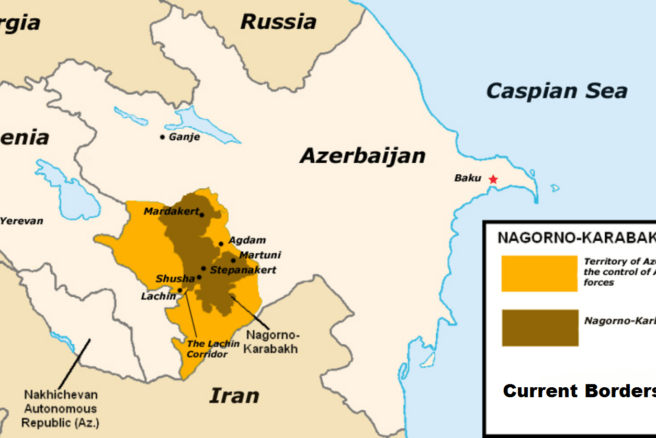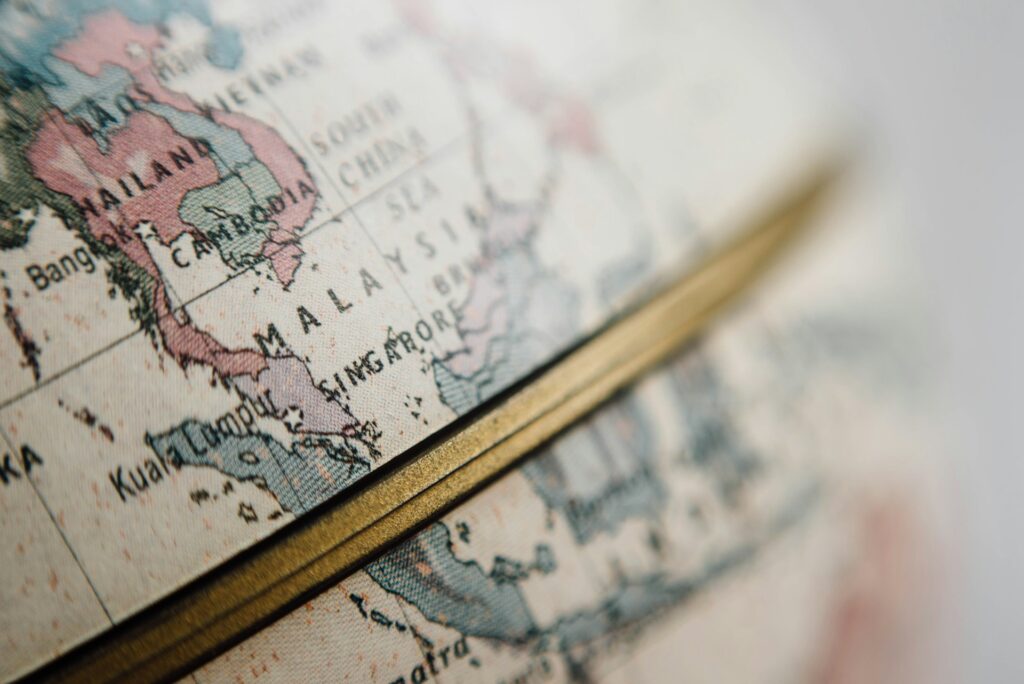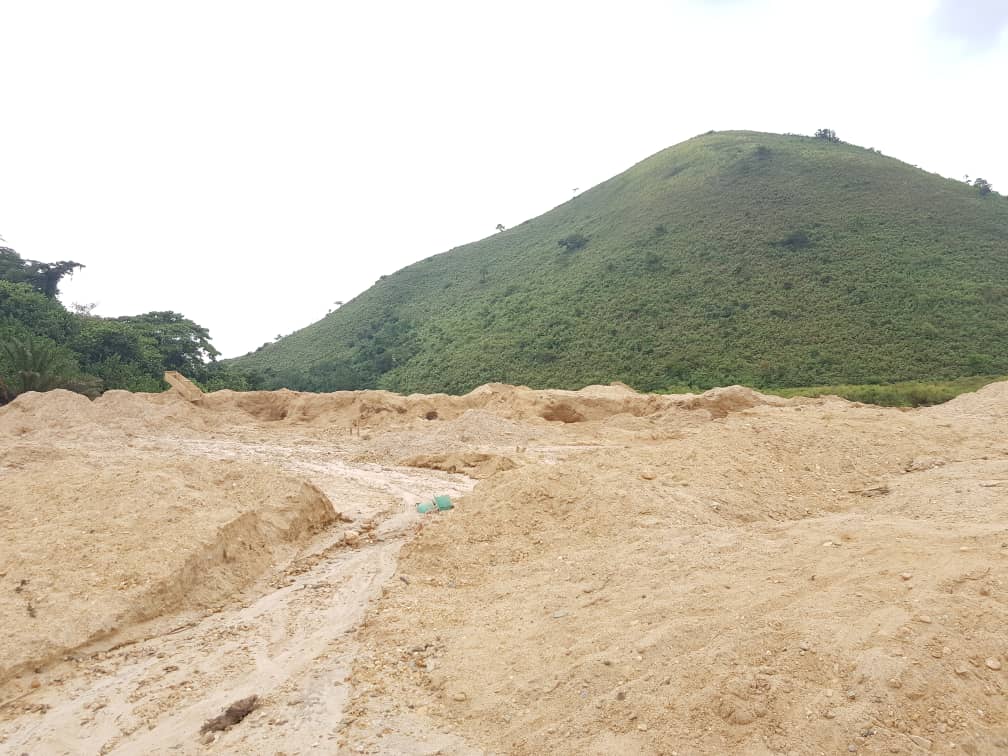The new war in the Nagorno-Karabakh conflict zone is an evident consequence of unproductive political negotiations and international mediation that have usurped the peace process between Armenians and Azerbaijanis for a quarter of century.
Now ranging for three weeks, the fiercest fighting between Armenian and Azerbaijani forces since 1994 have already claimed a hundred of lives of civilians on both sides and apparently of several thousands of combatants, but there are no reliable exact figures on the total number of the killed military personnel.
If not stopped soon, the war can bring catastrophic consequences for the region.
Post-Soviet rise of nationalist movements
The Nagorno-Karabakh conflict has been the gravest example in the post-Soviet space of how the nationalist uprising and exclusive state-building can hurriedly dismantle long-standing traditions of co-living between different ethnic groups.
The perestroika-regime launched in the mid-1980s by Mikhail Gorbachev have cleared up a greater room for nationalist alternatives to the Soviet ideology of “friendship and fraternity of peoples”. Since then the discourses of ethno-nationalist unity started prevailing over the discourses of inter-ethnic solidarity, thus leading to the calls for a “fair” redrawing of the internal borders of the Soviet Union, according to what were considered to be national interests.
The Nagorno-Karabakh Autonomous Oblast, an Armenian-populated part within the Azerbaijani SSR, was one of the targets for such demands. Armenians claimed that the Azerbaijani authorities purposefully had induced demographic change in the area and had created a configuration of local administrative rule favoring ethnic Azerbaijanis.
The Nagorno-Karabakh conflict has been the gravest example in the post-Soviet space of how the nationalist uprising and exclusive state-building can hurriedly dismantle long-standing traditions of co-living between different ethnic groups.
The large-scale public demonstrations for bringing this region under the jurisdiction of Armenia resulted in a very tense relationship between Armenians and Azerbaijanis. The first violent clashes, however, took place beyond the contested region itself, in other territories within Azerbaijan and Armenia, where the two ethnic groups were living side by side.
In January 1992, the active military fighting between Armenian and Azerbaijani forces began and ended only in May 1994, when the Russian mediation brought the parties to Bishkek for signing a ceasefire agreement.
As a result, Azerbaijan lost its effective control over Nagorno-Karabakh and five other districts surrounding the region. In two more adjacent districts Azerbaijani authorities control some of their parts. Moreover, a half million of Azerbaijanis were forced to leave their homes in the conflict zone.
Recurrent hostilities
The ongoing war in Karabakh is not the first but certainly the worst escalation since 1994. If continued at the current pace, it can exceed the first Karabakh war at least in the number of destroyed military infrastructure and equipment and of lost military personnel.
The most important condition that has allowed the parties to violate ceasefire regime is that there are neither international peacekeeping forces nor effective third-party monitoring mechanisms along the Line of Contact.
The ongoing war in Karabakh is not the first but certainly the worst escalation since 1994.
For the last 26 years, Armenian and Azerbaijani soldiers have been pointing guns at each other in some areas just over a few dozen meters. Only from four to six monitors from the OSCE have lately been inspecting the Line of Contact. The latest inspection took place in early March this year.
The largest escalation before the current military phase of the conflict took place in April 2016 and lasted for four days, resulting in heavy losses on both sides but also bringing symbolic territorial gains for Azerbaijan. This escalation was a landmark event in the conflict process, as it showed that Azerbaijan does not rule out a military resolution of the issue.
Deadlocked negotiations
Since 2016, the return of wide-scale warfare to the region has been an expected development. The governments have continued enhancing their military power and keeping alive strong antagonist discourses among their populations, whereas the peace process has been in a long stalemate.
The present official platform for the negotiations between Armenia and Azerbaijan was formed in 1993 under auspices of the OSCE Minsk group, when the mediation was delegated to its Co-Chairs, namely, France, Russia and USA. The main achievement of this political process is the so-called Basic Principles for settlement of the conflict that were formulated in 2007.
Even though these principles represent a general compromise on which officials from Baku (AZ) and Yerevan (AM) agree, the problem typically lies in a strong nationalistic opposition to this agreement. This has largely incentivized the negotiators to put forward incompatible technical details of its implementation.
Many rounds of negotiations at the levels of foreign ministers and the leaders of states have not resulted in any significant changes on the ground. But time has worked against Azerbaijan.
The governments have continued enhancing their military power and keeping alive strong antagonist discourses among their populations, whereas the peace process has been in a long stalemate.
The status quo formed in 1994 has been cementing. The statehood of the unrecognized Nagorno-Karabakh republic has been continuously strengthened through created governmental institutions and election procedures.
Moreover, the authorities of the unrecognized republic have extended their rule on all territories over which Azerbaijan lost its de-facto control, declaring them a “security zone” and constructing there a large system of defensive fortifications.
A tweet by Azerbaijan’s president Ilham Aliyev on October 9th clearly demonstrates that the immediate goal of the current war campaign was to change this unfavorable status quo.
It is important to note that the Karabakh factor has a great significance for political survival of elites in Armenia and Azerbaijan, and, in 1990s, even contributed to the overthrow of presidents in both countries. Therefore, there is a great problem that they approach the issue primarily from the perspective of elitist utilitarianism, while overlooking the real interests and needs of Armenians who live in the conflict zone and of Azerbaijanis who had to flee the region.
Neither of these two most vulnerable groups are effectively represented in the negotiations which are held exclusively between high-ranked authorities based in Baku and Yerevan.
The Karabakh factor has a great significance for political survival of elites in Armenia and Azerbaijan, and, in 1990s, even contributed to the overthrow of presidents in both countries.
Even though the 1994 ceasefire agreement was signed also by the de-facto government of Nagorno-Karabakh, its participation in the following negotiations was precluded by Azerbaijan. This decision is based on the consideration that such inclusion would have legitimized the separatist government and degraded the decisive involvement of Armenia in the conflict.
However, as a counterweight for possible participation of the Nagorno-Karabakh government, the Azerbaijani side suggested to include to the negotiations also the organization that represents the Azerbaijani community of Nagorno-Karabakh in Azerbaijan. The Armenian side, however, rejected this option in turn.
Of course, the leaderships of both the association of Azerbaijanis from Karabakh and the unrecognized government of Nagorno-Karabakh could also exercise an elitist utilitarian approach to the negotiations but at least they would have been more accountable to the people they directly represent, who are most suffering due to the protracted conflict, than the governments in Baku and Yerevan are.
Ethnonationalist narratives
Another related problem is that quite often those groups on both sides, who are vocally in support of war as the perceived victorious end to the conflict, are the least affected by the ongoing conflict. These are traditional war party groups and various nationalist-minded politicians, businessmen, journalists and public figures.
The newly resurging war in Karabakh is happening in a very different informational setting compared to the first Karabakh war in early 1990s. Typical of 21st century wars, there are divisions of noisy armchair warriors on both sides speaking out in support of the war, waging their own war of words on different online platforms and marginalizing the voices for peace. This includes re-producing one-sided narratives at its best, distorting and falsifying information at its worst.
In unison with state-produced and state-sponsored informational campaigns the pro-war online-based “patriots” aggressively promote hatred and dehumanizing attitudes between Armenians and Azerbaijanis. Additionally, across the globe, many influential figures in politics, sports, culture and fashion of both Armenian and Azerbaijani backgrounds have spoken out in support of either one or another versions of justice.
Quite often those groups on both sides, who are vocally in support of war as the perceived victorious end to the conflict, are the least affected by the ongoing conflict.
Many Armenian and Azerbaijani historians provide what they call clear evidence of the age-old feud between Armenians and Azerbaijanis, often “irrefutably proving” their historical rights to claim one or another territory in the region. Various local conflict experts retranslate them further adding elements of political analysis especially focusing on the geopolitical dimension of the conflict.
Indeed, there are few fundamentally new elements in Armenian and Azerbaijani mutually excluding ethnonationalist narratives as such, since many of their prejudiced historical arguments have been voiced even during the Soviet period. The recurrent Karabakh war has, however, concretized, actualized and eventually radicalized them further.
There are few fundamentally new elements in Armenian and Azerbaijani mutually excluding ethnonationalist narratives as such, since many of their prejudiced historical arguments have been voiced even during the Soviet period.
The pro-war messages from Armenia and Azerbaijan are also broadcasted thousands of kilometers away from the conflict zone through globalized Armenian and Azerbaijani communities. Notably, the online-based war of narratives is waging less in Armenian or Azerbaijani, and more in other languages of their joint communication – primarily Russian and English, thus bringing discursive “collateral damage” also to non-Armenian and non-Azerbaijani people.
Moreover, large Armenian and Azerbaijani diasporas in different countries, including Finland, organize demonstrations supporting only one side. In worst cases, the communities clash on the streets of world metropoles as it happened in July this year in Moscow, Brussels, London, and Los Angeles, following an incident on the Armenian-Azerbaijani border.
Need for community-based peace process
In the current escalation period, which is heavily complicated by the present active involvement of Turkey on the Azerbaijani side, it is hard to estimate when the hostility can be halted. The Russia-brokered agreement on a humanitarian ceasefire achieved in Moscow on October 10th between foreign ministers of Armenia and Azerbaijan is defunct, as hostilities have not ceased.
It’s also worth mentioning that Armenia and Azerbaijan are among the most militarized countries in the world. The Azerbaijani army has a larger military capacity in terms of equipment and manpower than Armenia, including highly modern combat drones, but its military operation has faced many difficulties with penetrating the deeply fortified Armenian-controlled territories in the conflict zone. Moreover, the escalated violence has promptly mobilized Armenian society, including its large international diaspora.
Armenia and Azerbaijan are among the most militarized countries in the world.
There are concerns that a possible international intervention would not stop, but prolong the war even further. Nevertheless, it is reasonable to think about peace already during the war.
Even though Armenia’s prime minister Nikol Pashinyan continuously represents the ongoing war as an “existential threat” to the Armenian people, it is difficult to believe that the Azerbaijani side has such a goal on the ground in addition to the announced ones to restore territorial integrity and return displaced Azerbaijanis to their places of original residence.
Although the military means used to achieve these goals, indeed, endanger the lives of Armenians in the conflict zone, the international community would hardly allow another Armenian Genocide to happen.
The main concern has been the question of who politically controls the territories, without looking for a possibility of non-violent co-existence between the affected people.
The main problem of the Nagorno-Karabakh peace process is that unfortunately typical of an elite-led state-centered conflict resolution approach, it has been turned upside down since the very beginning of the political negotiations. The main concern has been the question of who politically controls the territories, without looking for a possibility of non-violent co-existence between the affected people.
There is a great need for a paradigm shift here that would realize peace not as a formal agreement or a military victory, but as the right of both Armenian and Azerbaijani people to live there safely together.
While the political elite of the two sides can endlessly put on the negotiation table radically different provisions for the conflict resolution, a peaceful solution to the enmity can be found only among people who once already lived side by side without overt violence.
A peaceful solution to the enmity can be found only among people who once already lived side by side without overt violence.
It is crucially important to re-create non-formalized channels of dialogue between Armenian and Azerbaijani people of Karabakh even amidst the war. Only such dialogue can truly address the shared grief of war and mutual antagonisms as well as recall the experiences of co-existence, and eventually prepare larger Armenian and Azerbaijani societies for peace.
Without creating this backup channel, political negotiations are meaningless. Therefore, the international mediation should work towards persuading the political elites on both sides to allow Armenian and Azerbaijani communities of Karabakh to meet for discussing their common future without possible security consequences and public condemnation.
Vadim Romashov is a doctoral student at Tampere Peace Research Institute (TAPRI), Tampere University. His research focuses on the everyday life of Armenian-Azerbaijani rural communities in Georgia as well as on alternative peace processes for the Nagorno-Karabakh issue.





I wonder, what is the status of Nakhichevan exclave of Azerbaidjan in this conflict, if any? How is Nakhichevan connected to Azerbaidjan? Not via Armenia, for sure?
Indeed, this is a good question. The Nakhichevan Autonomous Republic of Azerbaijan cannot be accessed through the territory of Armenia. The most common way to get to Nakhichevan from Azerbaijan is by air. There are direct flights which bypass the air space of Armenia via Iran (from Baku it takes about 1,5 hour). There are also roads connecting the Nakhichevan region to Iran, and practically it is possible to bypass Armenia also by car. Train runs between Nakhichevan and Mashhad in Iran. From Turkey one can get to Nakhichevan by car as well.